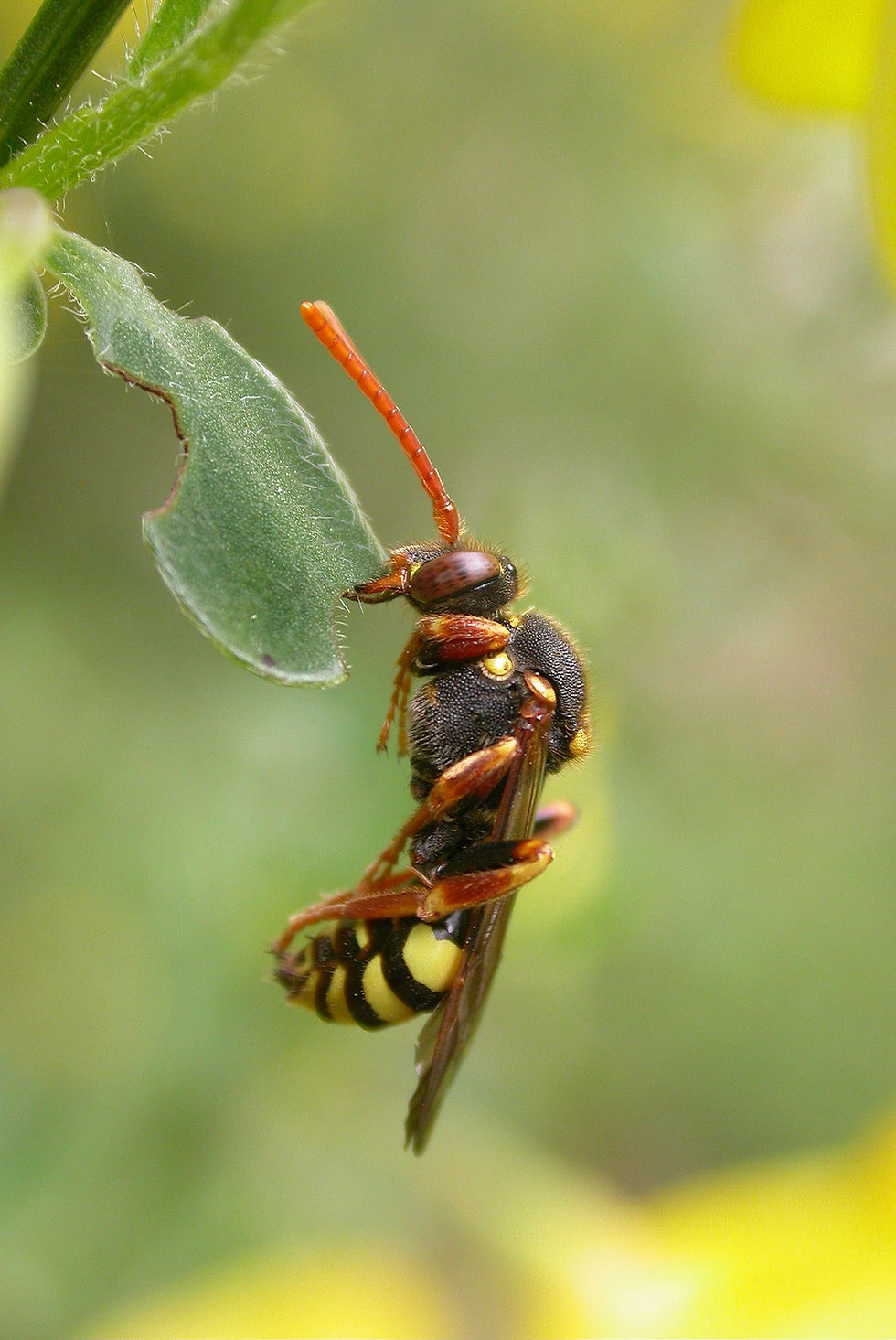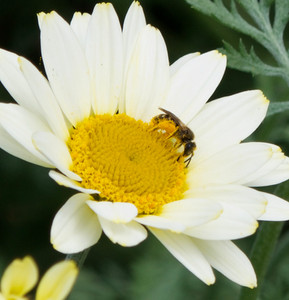How many bees are in your garden?
- Lorraine

- Jul 29, 2020
- 3 min read
Updated: Mar 6, 2024
Beekeepers are obsessed with honeybees and who doesn't love a bumble but that's not the end of the story - there could be more bees in your garden than you think!
There is only one species of honeybee (Apis mellifera). They have big nests of up to 60,000 individuals - there's lots of them. People love honey and so you can be pretty sure there is a beekeeper near you. These two things mean you're certain to have seen honeybees in a summer park or garden.
There are 25 species of bumble bee (Bombus). Big and hairy, their size and lazy hum makes them hard to miss. They look sort of cuddly and if you were asked to draw a bee, you'd probably draw a bumblebee.
But here's a fact that may surprise you - there are over 240 species of bee in the British Isles. Honeybees and bumblebees account for only about 10% of them!
What about all of these other kinds of bee - where are they and what are they doing?
Sometimes called the forgotten bees, they are just as important as their more famous relations.
Unlike the social honeybees and the cuddly bumbles, they are easily overlooked.
Some could be mistaken for honeybees or wasps whilst others look a bit like the furry bumblebees. Others are so small they could be a fly or an ant - if you notice them at all. They have many different lifestyles and habits.
Here are a few examples:.
Mining bees dig nests in the ground - earth banks, well drained lawns and compacted paths. An example is the Ivy Bee (Colletes hederae) which looks a bit like a very stripey honey bee. It flies in the autumn and was only identified in1993. It nests in garden lawns, parks and allotments. As you can guess from the name, it relies on ivy for pollen and nectar.

Cavity nesters include stem nesters, mason bees, leaf cutter bees and carder bees; each of which use particular materials to line their nests. Wool-carder bees (Anthidium manicatum) strip the hairs from wooly plants such as Lamb's Ear (Staychis byzantina) for their nests.
The leaf cutter bees use their powerful jaws to cut pieces out of leaves. They use the pieces to line and seal their nests.

Just like in the bird world, there are also cuckoo species.
These cuckoo bees do not make a nest of their own. They lay their egg in the nest cell of another species, the larva hatches and destroys the host egg/larva before feeding on its food supply. The host female has done all the work and the cuckoo (or cleptoparasite) gets the benefit.
All of the Nomad bees, for example, are cuckoo bees. Apart from their fascinating lifestyle, they also show how wasp-like many bees are and hence why they are easy to miss.

If you'd like to know more about bees, there's loads of information available. The FSC's Guide to Bees of Britain gives a quick overview and Plants for Bees by W.D.J. Kirk and F.N Howes provides information about honeybees, bumblebees and other bees in relation to the flowers they need. The Bumblebee Conservation Trust has lots of resources and whilst they focus on bumblebees there is an interesting section on other bees.
Get your eye in, perhaps plants some flowers for them or provide nest sites, and you'll soon spot these "forgotten bees" all around.
Credit to Gilles San Martin for his pictures (amazing!) - all of which he has made available under a Creative Commons ShareAlike Licence.








Comments